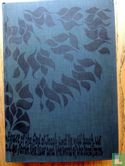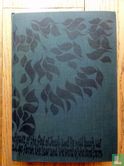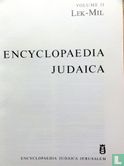


Enlarge image
Encyclopaedia Judaica



Catalogue information
LastDodo number
3716449
Area
Books
Title
Encyclopaedia Judaica
subtitle
Author
Literary collection
Literary number
11
Addition to number
Publisher
Series / hero
Original title
Translator
Illustrator
Year
1971
Type
Print Run
First edition
Type of book
Number of pages
1590
Number produced
Dimensions
22.0 x 30.0 cm
ISBN10
ISBN13
Barcode / EAN / UPC
Language / dialect
Country of publication
Details
History
The English-language Encyclopaedia Judaica was first published from 1971–1972 in sixteen volumes, in Jerusalem by Keter Publishing House, and in New York by the Macmillan Company. Between 1973 and 1991 eight "Yearbooks" were published (dated 1973, 1974, 1975-76, 1977-78, 1983-85, 1986-87, 1988-89, and 1990-91) along with two "Decennial" volumes dated 1973–1982 (also published as "Volume 17") and 1983–1992. Together these volumes contained more than 15 million words in over 25,000 articles.
Its general editors were, successively, Cecil Roth and Geoffrey Wigoder. Advertisers describe it as the result of about three decades of study and research by about 2,200 contributors and 250 editors around the world.
A Shorter Jewish Encyclopedia in Russian, launched in the early 1970s as an abridged translation of the Encyclopaedia Judaica, evolved into a largely independent publication that by late 2005 included eleven volumes and three supplements.[2]
An earlier, unfinished German-language Encyclopaedia Judaica was published by Nahum Goldmann's Eshkol Publishing Society in Berlin 1928–1934. The chief editors were Jakob Klatzkin and Ismar Elbogen. Ten volumes from Aach to Lyra appeared before the project halted due to Nazi persecutions.[3] Two Hebrew-language volumes A-Antipas, were also published under the title Eshkol (Hebrew: אשכול). A few of the articles from the German Judaica and even some of the reparations payments to Goldmann were used in making the English-language Judaica.
A shorter Jewish Encyclopedia had also been previously published at the turn of the twentieth century.[4] It was followed by the Jüdisches Lexikon I–II (1927–28) and Encyclopaedia Judaica I–II (1927–28) and Zsidó Lexikon (1929, edited by Ujvári Péter, in Hungarian).[5]
Because of its comprehensive scope, authority, and widespread availability, the Encyclopaedia Judaica has been recommended by the Library of Congress and by the Association of Jewish Libraries for use in determining the authoritative romanization of names of Jewish authors. Its guidelines for transliterating Hebrew into English are followed by many academic books and journals.
The 1972 edition has generated both positive and negative reviews.[6]
The word Judaica is commonly used to refer to objects of Jewish art and Jewish ceremonial objects.
Published originally in 1971, Encyclopedia Judaica has been the leading source for information on the Jewish people, the Jewish faith, and the state of Israel. The Second Edition continues the tradition of the Encyclopedia as the best source of coverage of how the Jewish people have influenced history and shaped the modern world.
For its all-inclusive coverage of Jewish life, culture, history and religion, the Encyclopedia Judaica earned a place on Library Journal’s “50 Best Reference Sources of the past millennium.”





